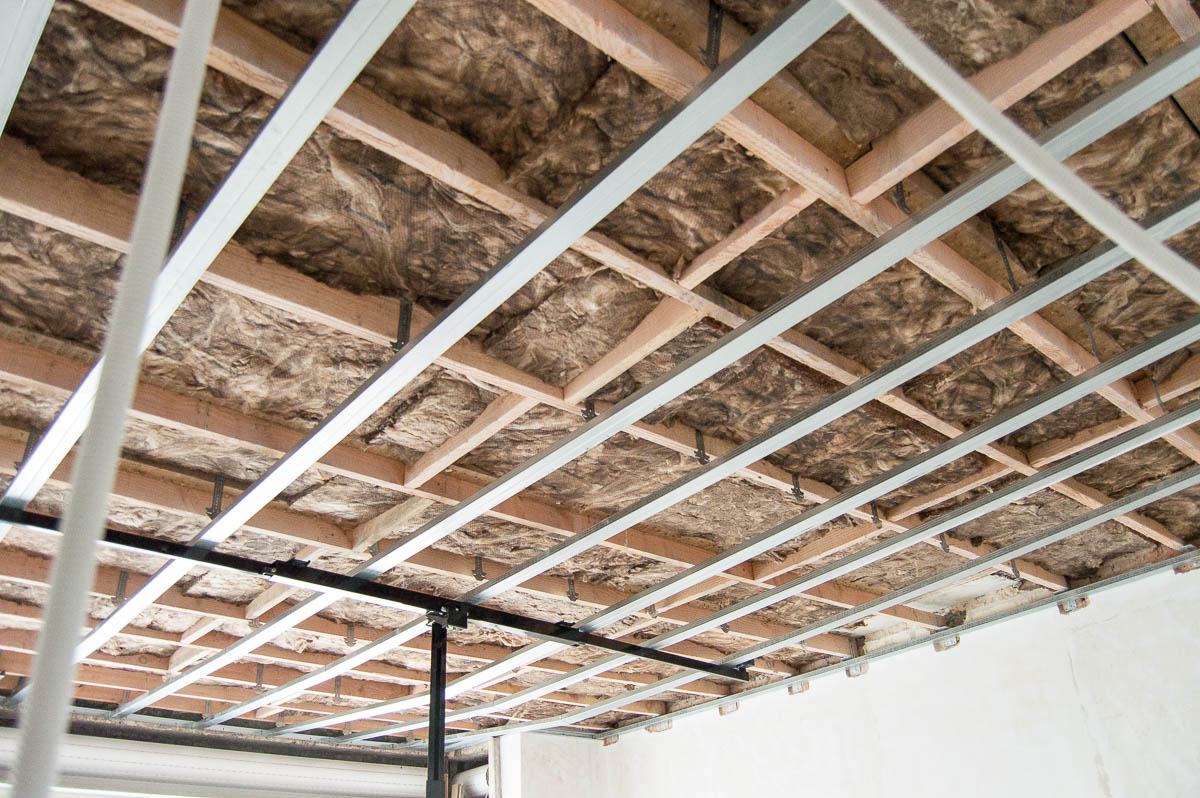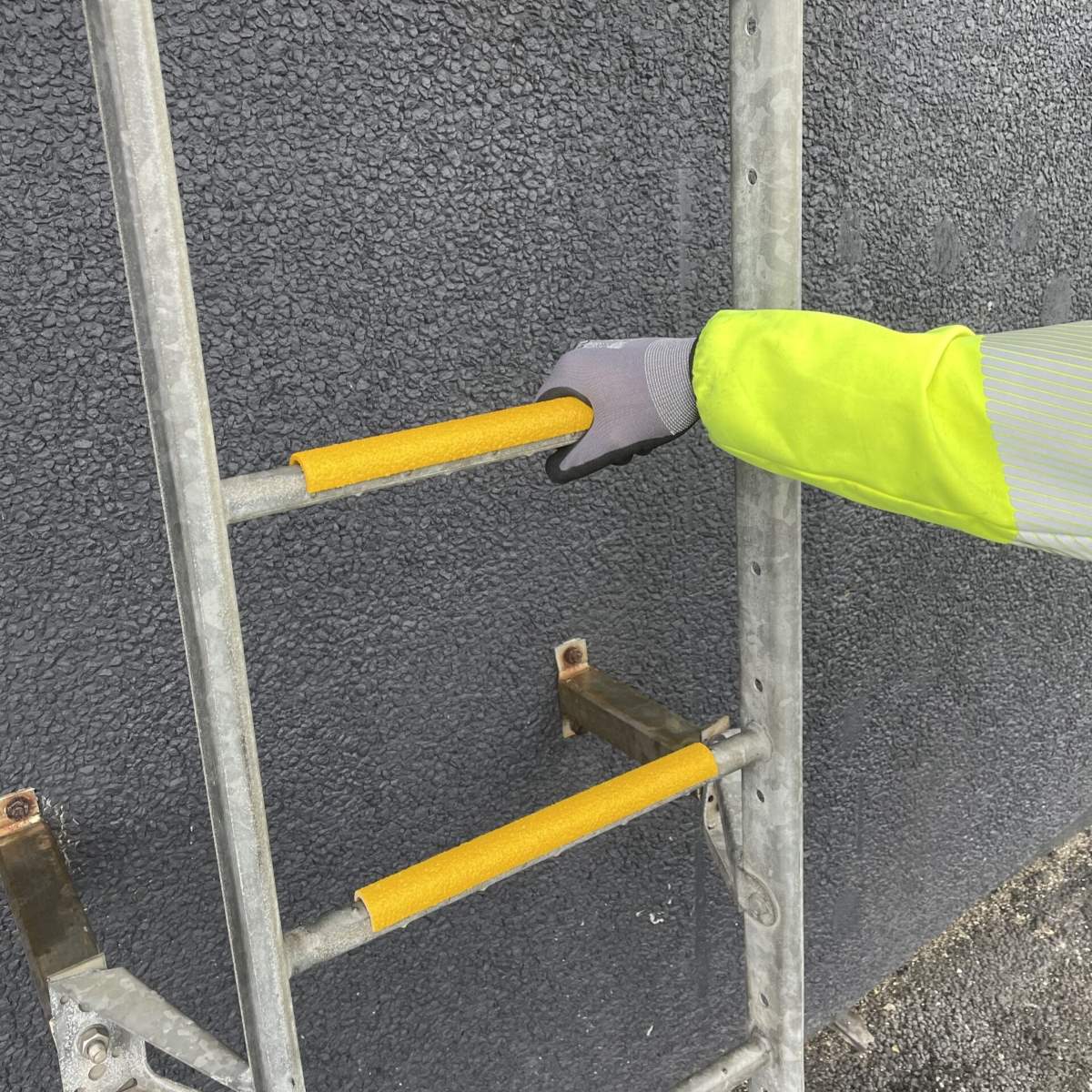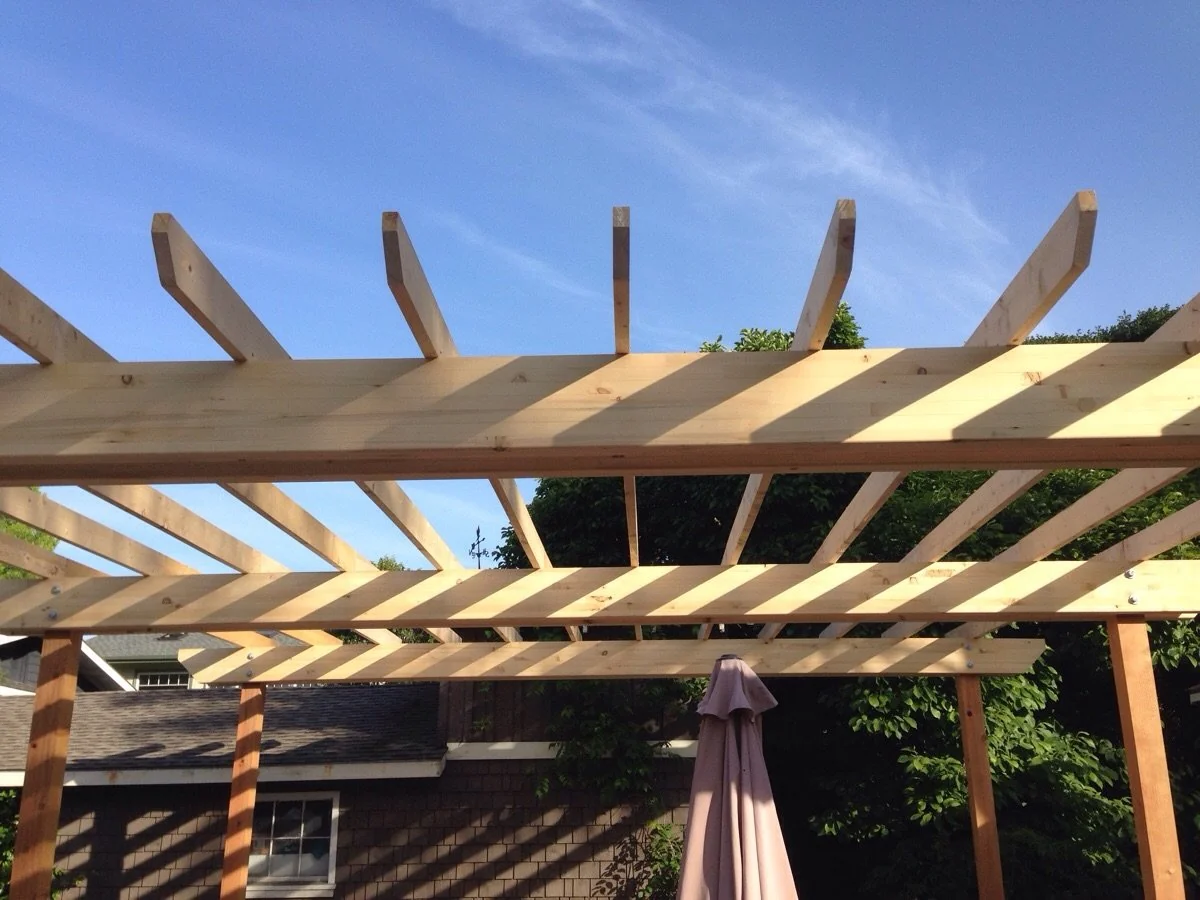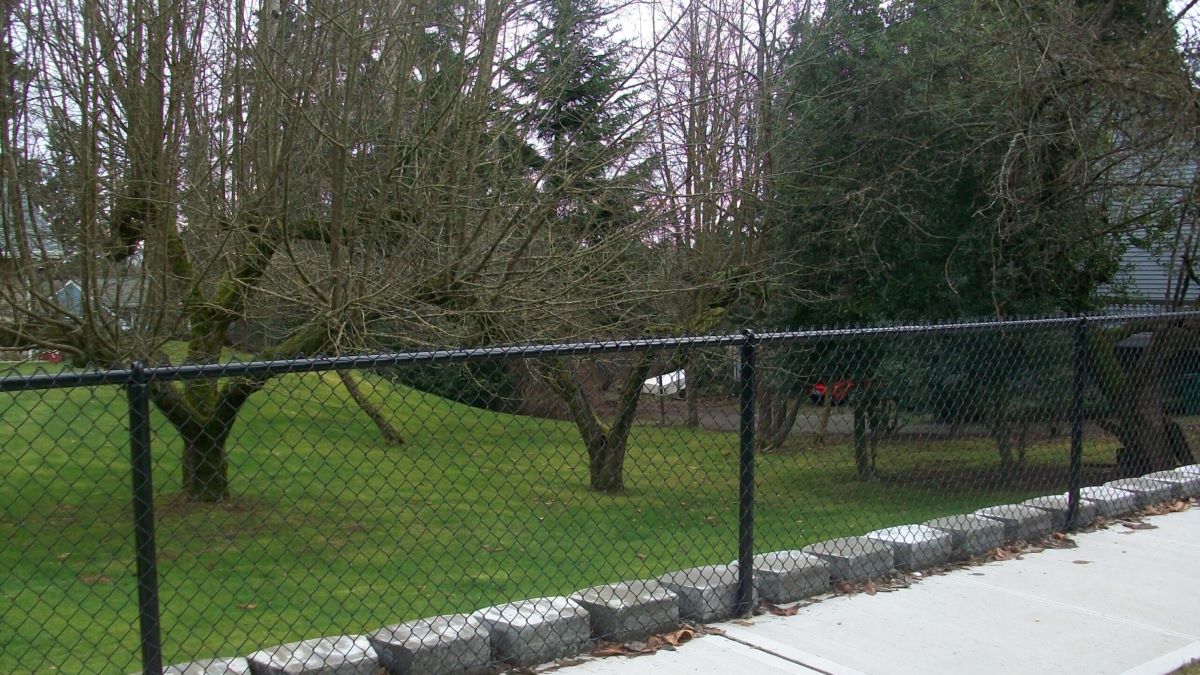

Articles
How Far Apart Are Ceiling Studs
Modified: October 19, 2024
Learn about the spacing between ceiling studs with our informative articles. Discover how far apart they are and ensure a secure installation.
(Many of the links in this article redirect to a specific reviewed product. Your purchase of these products through affiliate links helps to generate commission for Storables.com, at no extra cost. Learn more)
Introduction
When it comes to home improvement projects or mounting heavy objects on your ceiling, knowing the location of ceiling studs is essential. Ceiling studs, also known as ceiling joists, are the horizontal beams that provide structural support to your ceiling. They serve as the framework for attaching drywall or other ceiling materials, making them crucial for securely hanging things like light fixtures, fans, or even a suspended ceiling.
Locating ceiling studs can be a challenging task, especially if you don’t have access to the original construction plans or blueprints of your home. However, there are various methods and tools available that can help you find them accurately. In this article, we will delve into the different techniques for locating ceiling studs, including both traditional and modern methods.
Understanding the importance of ceiling studs is crucial before we dive into the methods. Ceiling studs provide stability and support to your ceiling, preventing it from sagging or collapsing. When you hang heavy objects or fixtures on your ceiling, you need to anchor them securely to the studs to ensure their safety and prevent damage to your ceiling or the object itself. Therefore, being able to locate ceiling studs is essential for any type of ceiling-related project.
Now that we understand the importance of ceiling studs, let’s explore the various methods available to help you locate them accurately. These methods include using electronic stud finders, magnetic stud finders, tape measures, and alternative techniques that can also come in handy in certain situations. Each method has its own advantages and considerations, so it’s important to understand how they work before you start your stud-finding journey.
So, whether you’re planning to hang heavy lighting fixtures, install a ceiling fan, or embark on any other project that requires attaching objects to your ceiling, read on to discover the best ways to locate ceiling studs and ensure a secure and successful installation.
Key Takeaways:
- Locating ceiling studs is crucial for secure installations. Electronic and magnetic stud finders provide quick and reliable results, while alternative methods like tapping and visual inspection can be useful in specific situations.
- Understanding the various methods to locate ceiling studs empowers DIY enthusiasts and professionals to embark on projects with precision and peace of mind. Whether using specialized tools or alternative techniques, safety and accuracy are paramount.
Read more: How Far Apart Are Studs On Exterior Walls
Understanding Ceiling Studs
Ceiling studs, also known as ceiling joists, are horizontal structural elements that provide support and stability to your ceiling. They are typically made of wood, although metal studs can also be used. Ceiling studs run parallel to each other and are spaced at regular intervals, usually 16 or 24 inches apart. The spacing between studs is determined by building codes and the structural requirements of the ceiling.
The primary function of ceiling studs is to bear the weight of the ceiling materials, such as drywall or plaster, and any additional weight that may be placed on the ceiling. By distributing the load evenly across the studs, they help prevent the ceiling from sagging or collapsing over time.
Ceiling studs are an integral part of the overall ceiling structure and are connected to the vertical wall studs or load-bearing walls. They provide a secure attachment point for the ceiling and help transfer the weight of the ceiling to the walls. In some cases, ceiling studs may also serve as a platform for running electrical wiring, plumbing, or HVAC ducts.
It’s important to note that the size and spacing of ceiling studs can vary depending on factors such as the design of the building, the type of construction, and the load requirements. For example, in older homes, you may find smaller studs spaced closer together, while newer constructions may have larger studs with wider spacing.
Identifying and understanding the location of ceiling studs is essential for various purposes. It allows you to securely attach objects to the ceiling, such as light fixtures, ceiling fans, or overhead storage racks. By anchoring these objects to the studs, you ensure their stability and minimize the risk of damage or accidents.
Additionally, knowing the position of the studs is crucial when planning renovations or modifications that involve cutting into the ceiling. By avoiding cutting through the studs, you maintain the structural integrity of the ceiling and prevent potential issues down the line.
In the next sections, we will explore different methods to locate ceiling studs accurately, ensuring a successful and hassle-free installation or renovation process. Whether you choose to use a modern electronic stud finder, a magnetic stud finder, or rely on traditional measuring techniques, understanding the basics of ceiling studs will go a long way in achieving your goals.
Methods to Locate Ceiling Studs
When it comes to locating ceiling studs, there are several methods you can use, ranging from traditional techniques to modern tools. Each method has its own advantages and considerations, so it’s important to choose the one that suits your needs and preferences. Let’s explore the most commonly used methods:
- Using an Electronic Stud Finder: Electronic stud finders are handheld devices that use sensors to detect changes in density behind the ceiling surface. They can quickly and accurately locate ceiling studs, as well as other hidden objects like electrical wires or pipes. Simply slide the stud finder across the ceiling, and it will indicate the presence of a stud with an audible or visual signal. Electronic stud finders are easy to use and provide reliable results, making them a popular choice among DIY enthusiasts and professionals.
- Using a Magnetic Stud Finder: Magnetic stud finders work based on the principle that screws or nails used to attach the ceiling material are often fastened to the studs. These devices contain a small magnet that is attracted to the metal fasteners. By sliding the magnetic stud finder across the ceiling, you can locate ceiling studs where the magnet is drawn towards the fasteners. While magnetic stud finders are relatively inexpensive and simple to use, they may not be as accurate as electronic stud finders, especially if the fasteners are not directly attached to the studs.
- Using a Tape Measure: If you don’t have access to a stud finder, you can use a tape measure to locate ceiling studs manually. Start by measuring the distance between two adjacent visible studs. Typically, studs are spaced either 16 or 24 inches apart, although other spacing variations may exist. Once you determine the spacing, you can use that measurement to estimate the location of other studs. Measure from one visible stud and mark the measurement on the ceiling, then continue marking at the same interval until you have a series of marks indicating the probable locations of the studs. This method is more time-consuming and less precise than using a stud finder, but it can still provide a rough estimation of the stud locations.
These are the primary methods for locating ceiling studs. However, it is worth mentioning that other alternative techniques can be used in specific situations. For example, if your ceiling has a textured or popcorn finish, you can gently tap the ceiling with your hand or a small hammer and listen for a hollow sound, indicating the presence of a stud. Additionally, if you have access to the attic or crawl space above the ceiling, you can visually inspect the location of the ceiling joists from above.
By utilizing these methods, you can effectively locate ceiling studs and proceed with your installation or renovation projects confidently. Each method has its advantages and considerations, so choose the one that aligns with your preferences, available tools, and the level of accuracy you require.
In the next sections, we will delve deeper into each method, providing detailed step-by-step instructions to help you master the art of finding ceiling studs.
Using Electronic Stud Finder
An electronic stud finder is a handy tool that utilizes advanced technology to locate ceiling studs quickly and accurately. These devices are widely available in hardware stores and online, and they are commonly used by DIY enthusiasts and professionals for various construction and home improvement projects.
Here’s a step-by-step guide on how to use an electronic stud finder to locate ceiling studs:
- Read the instructions: Before you start, carefully read the user manual or instructions that come with the electronic stud finder. Familiarize yourself with the device’s features, buttons, and calibration process.
- Prepare the area: Clear the area where you will be scanning for studs. Remove any furniture, decorations or obstructions that may interfere with the stud finder’s accuracy.
- Turn on the stud finder: Press the power button or switch on the electronic stud finder to activate it. Most stud finders have a display screen that provides information about the location of the studs.
- Calibrate the stud finder: Place the stud finder against a known area without any studs, such as an open wall or empty space on the ceiling. Follow the instructions to calibrate the device. This step ensures accurate readings by setting the baseline for detecting changes in density.
- Scan the ceiling: Starting from one end of the ceiling, slowly move the stud finder across the surface. Keep it flat against the ceiling and apply light pressure. The stud finder will emit a sound or display a visual indicator when it detects a change in density, indicating the presence of a stud.
- Mark the stud locations: Once the stud finder alerts you to the presence of a stud, mark the location using a pencil or masking tape. Continue scanning along the ceiling, marking the stud locations as you go. This will create a series of marks indicating the position of the studs.
- Verify the stud locations: After scanning the entire ceiling, double-check the marked locations by scanning over them again. This step helps ensure the accuracy of your markings and confirms the presence of the studs.
It’s important to note that different electronic stud finders may have additional features or settings, such as deep scanning modes for thicker ceiling materials or the ability to detect live electrical wires. Refer to the user manual for specific instructions on utilizing these advanced features.
Using an electronic stud finder offers many advantages. It provides fast and accurate results, saving you time and effort compared to other manual methods. Electronic stud finders are also capable of detecting other hidden objects like electrical wires or plumbing pipes, which can be crucial for avoiding accidental damage during your ceiling-related projects.
Remember to follow proper safety precautions when using electronic stud finders, especially if they have live wire detection capabilities. Always turn off the power before drilling or mounting objects to avoid electric shocks or fires.
Now that you’ve mastered the technique of using an electronic stud finder, you’re ready to locate ceiling studs with ease and precision. In the next section, we will explore another popular method using a magnetic stud finder.
Use a stud finder to locate ceiling studs. Typically, ceiling studs are spaced 16 or 24 inches apart. Mark the studs before hanging heavy items to ensure proper support.
Using Magnetic Stud Finder
A magnetic stud finder is a simple yet effective tool that can help you locate ceiling studs quickly and easily. Unlike electronic stud finders, magnetic stud finders rely on the presence of metal fasteners to indicate the position of the studs. These devices are affordable, portable, and suitable for both DIY enthusiasts and professionals.
Here’s a step-by-step guide on how to use a magnetic stud finder to locate ceiling studs:
- Prepare the area: Clear the area where you will be using the magnetic stud finder. Remove any furniture, decorations, or obstructions that may interfere with the device’s accuracy.
- Locate a starting point: Choose a starting point on the ceiling where you want to begin scanning. It’s helpful to start near a corner or a known visible stud.
- Hold the magnetic stud finder: Grasp the magnetic stud finder firmly, ensuring that the magnet on the device is exposed and facing towards the ceiling.
- Slide the stud finder: Gently and slowly slide the magnetic stud finder across the ceiling in a straight line, following a horizontal path. Keep the device flat against the surface and maintain a consistent pressure.
- Observe the magnet’s behavior: As you move the magnetic stud finder, pay attention to any changes in the behavior of the magnet. If the magnet is attracted to the ceiling, it indicates the presence of metal fasteners, which are often attached to the studs.
- Mark the stud locations: When the magnet is attracted to the ceiling, mark the location using a pencil or masking tape. Continue sliding the magnetic stud finder along the ceiling, marking the stud locations as you go. This will help create a series of marks indicating the position of the studs.
- Verify the stud locations: Once you have marked the suspected stud locations, go back and verify them by repeating the scanning process. This step ensures the accuracy of your markings and confirms the presence of the studs.
Magnetic stud finders are best suited for detecting metal fasteners, such as nails or screws, that are directly attached to the studs. In some cases, the metal fasteners may have a slight gap or distance from the actual stud, so it’s important to use caution and cross-reference your markings with nearby visible studs for accuracy.
However, magnetic stud finders have limitations. They may not be as accurate as electronic stud finders, especially if the metal fasteners are not perfectly aligned or if there are other metallic objects present in the ceiling. Additionally, magnetic stud finders cannot detect non-metal studs or objects behind the ceiling surface, such as electrical wires or plumbing pipes.
Despite these limitations, magnetic stud finders are a cost-effective and practical tool for locating ceiling studs. They are easy to use, portable, and require no batteries or calibration. By following the steps above, you can confidently locate ceiling studs and proceed with your mounting or installation projects.
Now that you are familiar with using a magnetic stud finder, let’s explore another method using a tape measure to locate ceiling studs.
Read more: How To Find Ceiling Stud
Using a Tape Measure
If you don’t have access to a stud finder, you can still locate ceiling studs using a tape measure. While this method may not provide the same level of accuracy as electronic or magnetic stud finders, it can still help you estimate the general location of the studs. It’s a simple and cost-effective technique that requires only a tape measure and a little bit of patience.
Here’s a step-by-step guide on how to use a tape measure to locate ceiling studs:
- Locate a visible stud: Start by identifying a visible stud on the ceiling, typically near a corner or doorway. You can use a stud finder or visually inspect the ceiling to find a stud with visible screws or nails.
- Measure the stud spacing: Once you have found a visible stud, use a tape measure to measure the distance between that stud and the adjacent one. The spacing between ceiling studs is typically either 16 or 24 inches, although other variations may exist.
- Mark the stud locations: Starting from the visible stud, use the measured spacing to estimate the position of the other studs along the ceiling. Mark each estimated stud location with a pencil or masking tape. Make sure to continue marking at the same interval throughout the entire ceiling.
- Verify the stud locations: After marking the estimated stud locations, visually inspect the ceiling to verify the accuracy of your markings. Look for any visible signs of screws, nails, or slight indentations that may indicate the presence of studs. Adjust your markings as necessary.
Using a tape measure to locate ceiling studs is a more manual and less precise method compared to using stud finders. It relies on the assumption that the studs are evenly spaced, which may not always be the case in some older or non-standard constructions. Additionally, this method may not account for factors like variations in stud spacing due to load requirements or building codes.
However, using a tape measure can still provide you with a rough estimation of the stud locations. It’s a useful technique when you don’t have access to specialized tools or if you prefer a more hands-on approach.
Remember, when using this method, it’s always a good idea to cross-reference your markings with any visible studs or other known structural elements in the ceiling, such as beams or load-bearing walls. This will help ensure the accuracy of your measurements and reduce the chance of errors.
Now that you are familiar with using a tape measure to locate ceiling studs, you have another option in your toolkit for your mounting or installation projects. In the next section, we will explore some alternative methods that can be useful in specific situations.
Alternative Methods to Locate Ceiling Studs
While electronic stud finders, magnetic stud finders, and tape measures are the most popular and widely used methods for locating ceiling studs, there are also alternative techniques that can come in handy in certain situations. These methods can be helpful when traditional tools aren’t available or when you encounter challenges that require a different approach. Here are a few alternative methods to consider:
- Visual Inspection: One of the simplest ways to locate ceiling studs is through visual inspection. Carefully examine the ceiling surface for any visible signs of studs, such as nails, screws, or slight indentations. In some cases, the stud locations may be exposed due to a damaged or missing section of the ceiling material. This can provide you with a clear indication of where the studs are located.
- Tapping: Tapping the ceiling with your hand or a small hammer can sometimes help identify the location of ceiling studs. As you tap along the ceiling surface, listen for variations in sound. A hollow sound may indicate an area between the studs, while a more solid, thud-like sound may suggest the presence of a stud. While this method is not as accurate as using specialized tools, it can be useful in situations where other methods are not possible.
- Using a Flashlight: In some cases, shining a flashlight at a low angle across the ceiling can reveal shadows or contours indicating the position of the ceiling studs. This technique works best in locations where natural lighting is scarce or when dealing with textured ceilings that may make it hard to identify the stud locations visually.
- Accessing the Attic or Crawl Space: If you have access to the attic or crawl space above the ceiling, you can visually inspect the ceiling joists or use a measuring tape to determine the distance between them. This method provides a direct and accurate way to identify the position of the ceiling studs. However, keep in mind that accessing the attic or crawl space requires safety precautions and may not be feasible in all situations.
These alternative methods can be useful when the traditional methods are not applicable or when you need supplemental information to confirm your stud locations. They may require a bit more effort and observation compared to using specialized tools, but they can still provide valuable insights and help you proceed with your projects confidently.
It’s important to note that these alternative methods may not guarantee the same level of accuracy as electronic or magnetic stud finders. For precise results and peace of mind, consider using the traditional methods or investing in a reliable stud finder for optimal accuracy.
Now that you are familiar with the alternative methods, you have additional options to consider when locating ceiling studs for your mounting or installation projects. In the next section, we will conclude our discussion and summarize the key points.
Conclusion
Locating ceiling studs is a crucial step in various home improvement projects and installations. Whether you’re planning to hang a heavy light fixture, install a ceiling fan, or mount shelves or cabinets, knowing the precise location of ceiling studs is essential for a secure and successful installation.
In this article, we explored different methods to help you locate ceiling studs accurately. Electronic stud finders, such as electronic or magnetic stud finders, offer quick and reliable results by detecting changes in density or the presence of metal fasteners. These tools are widely available, easy to use, and provide efficient solutions for finding ceiling studs.
If you don’t have access to specialized tools, using a tape measure can still provide a rough estimation of the stud locations. This method involves measuring the spacing between visible studs and marking the estimated positions along the ceiling.
In addition to the traditional methods, we discussed alternative techniques, such as visual inspection, tapping, using a flashlight, or accessing the attic or crawl space. These methods can be useful in specific situations where other tools may not be available or applicable.
While each method has its own advantages and considerations, it’s important to choose the one that suits your needs and preferences. Consider factors such as the level of accuracy required, the availability of tools, and the complexity of your project.
Remember to always exercise caution and safety precautions when locating ceiling studs and performing any ceiling-related projects. Cross-reference your findings with visible studs or other known structural elements before proceeding with any installations or modifications.
By mastering the techniques discussed in this article, you can confidently locate ceiling studs and ensure the stability and safety of your ceiling installations. Whether you’re a DIY enthusiast or a professional, understanding the methods to locate ceiling studs empowers you to embark on your projects with precision and peace of mind.
So, the next time you’re planning a ceiling-related project, grab your stud finder, tape measure, or flashlight and start locating those ceiling studs like a pro!
Frequently Asked Questions about How Far Apart Are Ceiling Studs
Was this page helpful?
At Storables.com, we guarantee accurate and reliable information. Our content, validated by Expert Board Contributors, is crafted following stringent Editorial Policies. We're committed to providing you with well-researched, expert-backed insights for all your informational needs.















0 thoughts on “How Far Apart Are Ceiling Studs”